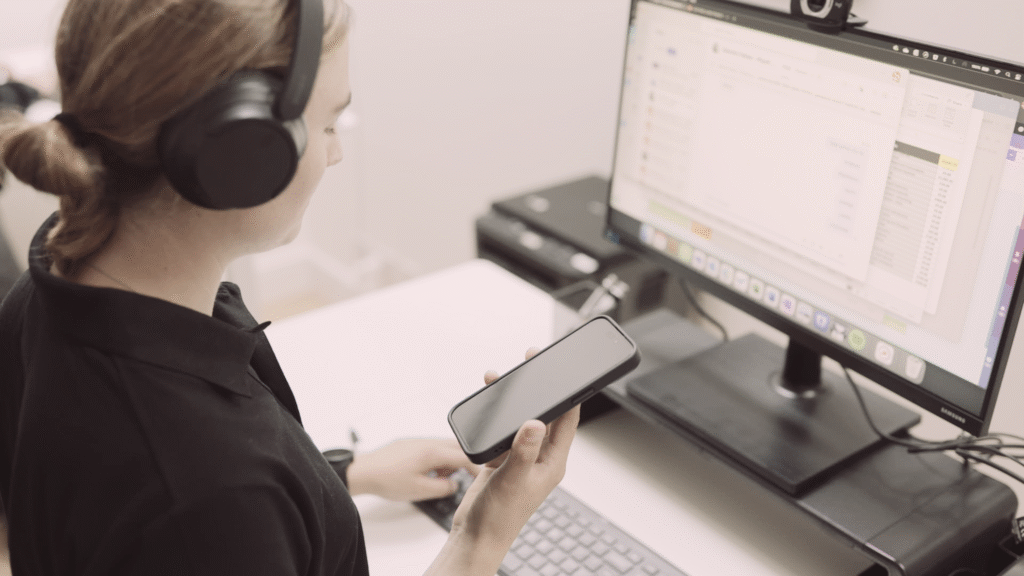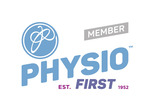
It’s no secret that our jobs can be a primary source of everyday aches and pains. From shoulder tension to wrist pain, back pain, or more severe conditions like carpal tunnel syndrome, there are a lot of ways we can become sore just by doing our jobs. However, there are also lots of ways to maintain the health of our bodies in the workplace.
Especially as autumn temperatures start to turn up the achiness we may feel in our joints, or, in time, lead to the first snow on the ground, it’s especially important to make sure we’re staying healthy and limber as much as we can. Let’s explore five easy ways you can make your workspace more friendly for your body.
Why Should We Make Our Workspaces Ergonomic?
It can be easy to question the real health benefit of making our workspaces friendly for our posture and accommodating for injury prevention. After all, can having a chair shaped just the right way really matter that much for your overall health if you’re getting in regular workouts?
There are two ways to answer this question:
- Yes, because if you’re injured, you’re likely not getting in your regular workouts.
- Yes, because supporting correct posture and alignment prevents chronic pain and injuries that can not only hinder regular exercise but also accelerate a decline in mobility, loss of muscle mass, and a reduction in overall quality of life.
At Physit, we hold both of these things to be true. Another way of saying this would be that ergonomic workspaces and movement at work prevent both short-term injury and pain and long-term injury and pain. And that’s our entire mission – to help you live a pain-free life.
Creating a Workspace That Promotes Long-Term Health: Physit’s Top Tips
1. Position your monitor at a comfortable height
Your computer monitor should be at eye level and directly in front of you, about 50-100 centimetres away from your face. You can use books or other supports to raise it if needed. Another way to ensure your monitor is at the proper distance is to place it an arm’s length away from your face. The top of the screen should be at or slightly below eye level – a little lower if you wear bifocal glasses.
Laptops aren’t considered the most ergonomically friendly because you have to look down to view the screen, and the touchpad and keyboard are cramped. If you use a laptop, consider using it with a full keyboard and mouse and setting books under it so you can raise your laptop to eye level. In this way, it mimics a traditional monitor setup.
2. Make sure your keyboard and mouse are in supportive positions
The keyboard and mouse should be positioned close to your body to maintain easy access and minimise strain. The goal with a keyboard is to be able to let your shoulders, wrist, and elbows relax with your elbows and wrists in a line that forms a right angle. Some people enjoy using a wrist rest, a cushion that goes underneath the wrists and sits in front of the keyboard.
While wrist rests can alleviate pain in the shoulders, it’s essential to be aware of the potential long-term effects1 of using them, as they put pressure on the underside of the wrists. Whether you periodically use a wrist rest or not, the wrists should be in a neutral position as you work.
3. Use an ergonomic chair to support proper posture
A chair that supports your spine is best for an ergonomic setup. Try avoiding any chairs that lean back excessively or don’t fully come to the top of your shoulders. While there are a lot of ergonomic chair options, your posture will be the most critical component of how you use your chair. It is worth considering getting a chair with adjustable armrests and an adjustable seat. However, manual accommodations can also be made.
When you’re sitting at work, ensure:
- Your chair is at a height that allows you to rest your feet on the floor. (You can also use a footrest to make sure your thighs are parallel to the floor).
- Armrests are positioned so your arms can easily rest close to your body and your elbows resting at 90 degrees
- Place a rolled-up towel or pillow behind your lower back if your chair doesn’t have built-in lower back support.
- Your ears remain over your shoulders. This is a good measurement of if you’re leaning too far forward or leaning too far backwards.
4. Focus on eye health throughout the day
Even when you have a well-positioned monitor, your eyes can undergo unnecessary strain if you look at a computer for too long, especially when that time is uninterrupted. There is currently no conclusive evidence2 that blue light glasses mitigate the effects of screen time – although there is no harm in wearing them. The current guidelines3 suggest looking away for 20 seconds, for 20 feet (6.1 metres), every 20 minutes – also known as the 20/20/20 rule.
5. Invest in an ergonomically friendly desk setup
Beyond a chair, keyboard, and mouse, your desk itself matters a lot to whether you’re able to work effectively. An ergonomic desk will have enough room for you to position your screens and be deep enough that you can comfortably rest your feet underneath it. Prioritise screen placement and foot placement over using your desk for extra storage – whether that’s crowding the top of your desk or the space underneath your desk with additional items.
Additionally, make space to keep essentials close. If there are items besides your mouse and keyboard you reach for multiple times throughout the day, keep them close so you aren’t constantly straining.
6. Stretch throughout the day
Beyond having an ergonomically friendly setup, it’s also key to stretch frequently and alternate sitting and standing. When you do stand, try to be conscious of even balance distribution and avoid using your desk to lean on. Try stretching every hour to incorporate movement into your routine. Not only will it keep you limber during what might be an otherwise fairly sedentary day, it can help reduce stress and keep you feeling refreshed – meaning the urge for an afternoon nap may not be as strong.
Stretches also don’t have to be anything complicated. You can try simple neck stretches, like a side bend of each ear to the same shoulder, or neck rolls. For back stretches, try rotating from side to side or doing a gentle back bend.
You can also do wrist circles or bend your wrists forward and backwards to release some tension. Don’t forget forward folds and simply stretching your arms over your head as easy stretches you can do next to your desk.
7. Lift from the knees, not the back
Plenty of us don’t have desk jobs, and if you’re a manual labourer, you may be required to do heavy lifting. 4 Many people use incorrect lifting form, bending over from the back and trying to lift. This is an ineffective way to lift and puts you at risk of injury.
If you’re asked to lift a heavy object, bend at the knee and hips with your feet shoulder-width apart. Keep your back straight and your core engaged. Once you have a good grasp on the object, use the power of your legs to push up, keeping your core engaged.
Read more about what a “perfect” squat looks like.
If you need to turn while you’re holding the object, use your feet. Set the object down with the same principles. Keep the heavy object close to your body the entire time to minimise strain.
Ask For Help When You Need It
Everyone should ask for help when they need it, whether it’s asking a team member to help you lift a heavy load or advocating for a more ergonomic workspace to your employer. These tips are just one way you can help yourself experience less pain and more comfort during the workday and beyond for better health now and later in life.
Physit is here to help, too. We perform postural and ergonomic assessments in-home or at worksites. We know that employees who feel good at work are more likely to want to come into work, take fewer sick days, and be happier overall as part of a well-functioning team. If you’re interested in how our workplace assessment services can help your workforce improve their well-being, or if you’d like to get help assessing your in-home office set up, contact us today. We’re here to help.
- Canadian Centre for Occupational Health and Safety. (2025, August 28). Office ergonomics — Wrist rests. https://www.ccohs.ca/oshanswers/ergonomics/office/wrist.html ↩︎
- Singh, S., Keller, P. R., Busija, L., McMillan, P., Makrai, E., Lawrenson, J. G., Hull, C. C., & Downie, L. E. (2023) Blue-light filtering spectacle lenses for visual performance, sleep, and macular health in adults. Cochrane Database of Systematic Reviews, 8(8), CD013244. https://pubmed.ncbi.nlm.nih.gov/37593770/ ↩︎
- Optegra UK Ltd & NHS My Planned Care. (2023, December). My Planned Care – Optegra UK Ltd. https://www.myplannedcare.nhs.uk/wp-content/uploads/2023/12/Optegra-UK-Ltd-NHS-My-Planned-Care.pdf ↩︎
- Health and Safety Executive. (2020, January). Manual handling at work: A brief guide (INDG143, rev. 4). https://www.hse.gov.uk/pubns/indg143.pdf
↩︎




